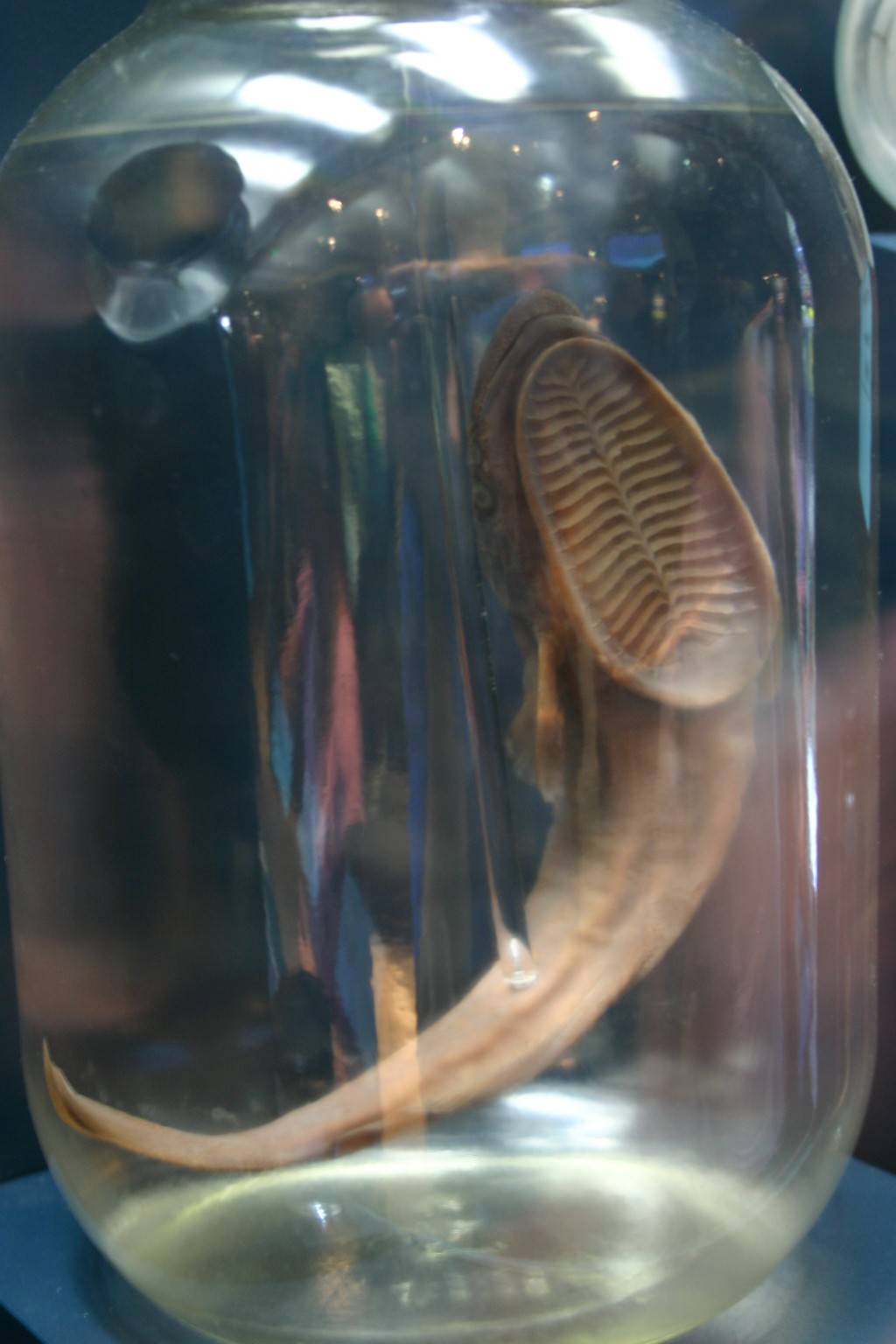Remora remora on:
[Wikipedia]
[Google]
[Amazon]
The common remora (''Remora remora'') is a pelagic marine fish belonging to family

Echeneidae
The remora (), sometimes called suckerfish, is any of a family (Echeneidae) of ray-finned fish in the order Carangiformes. Depending on species, they grow to long. Their distinctive first dorsal fins take the form of a modified oval, sucker-li ...
. The dorsal fin, which has 22 to 26 soft rays, acts as a suction cup, creating a vacuum to allow it to attach to larger marine animals, such as whales, dolphins, sharks, and sea turtles.
Physical characteristics
The common remora has a suckerlike dorsal fin and an anal fin. Its body can be brown, black or grey in color. It can reach in total length, though most do not exceed . The maximum known weight of this species is .Biology and behavior
''R. remora'' and its host seem to partake in a symbiotic relationship; the common remora does not seem to have a negative overall effect on its host. The host provides the remora with fast-moving water to bathe its gills, a steady flow of food, transportation, and protection. The remora benefits the host by feeding in part on some of its parasites, but increases its hydrodynamicaldrag
Drag or The Drag may refer to:
Places
* Drag, Norway, a village in Tysfjord municipality, Nordland, Norway
* ''Drág'', the Hungarian name for Dragu Commune in Sălaj County, Romania
* Drag (Austin, Texas), the portion of Guadalupe Street adj ...
. The common remora's attachment to one host can last for up to three months. During this time, the remora can move its attachment site if it feels threatened. The common remora cannot survive in still water; it needs water flow over its gills to provide it oxygen.
Habitat
This remora is commonly found in warm marine waters and has been seen in the western Mediterranean and the Atlantic, as well as the North Sea.
Reproduction
A mating couple may attach to the same host, and have host fidelity. It is not clear when during the year the common remoraspawns
Spawn is the eggs and sperm released or deposited into water by aquatic animals. As a verb, ''to spawn'' refers to the process of releasing the eggs and sperm, and the act of both sexes is called spawning. Most aquatic animals, except for aquat ...
, and little is known about the fish's reproductive behavior.
Food and diet
The remora consumes food scraps from its host, as well as plankton and parasiticcopepod
Copepods (; meaning "oar-feet") are a group of small crustaceans found in nearly every freshwater and saltwater habitat (ecology), habitat. Some species are planktonic (inhabiting sea waters), some are benthos, benthic (living on the ocean floor) ...
s.
Significance to humans
No known negative impacts for humans are known. Remoras can be caught as fishing bycatch and put in aquaria. Remoras have been used in fishing - one method involves tying fishing line to the remora, then waiting for it to cling to a larger fish.''Fishes, Ascidians, etc.'' Vol. 7. Edited by Sir S.F. Harmer and Sir A.E. Shipley. London: McMillan and Co., Limited. 1932. p. 691 Other common names for this familiar fish include suck fish, stout sucking fish, common sucker, shark-sucker, brown sucker, and shark pilot.References
External links
* {{Taxonbar, from=Q749460 common remora Cosmopolitan fish common remora common remora